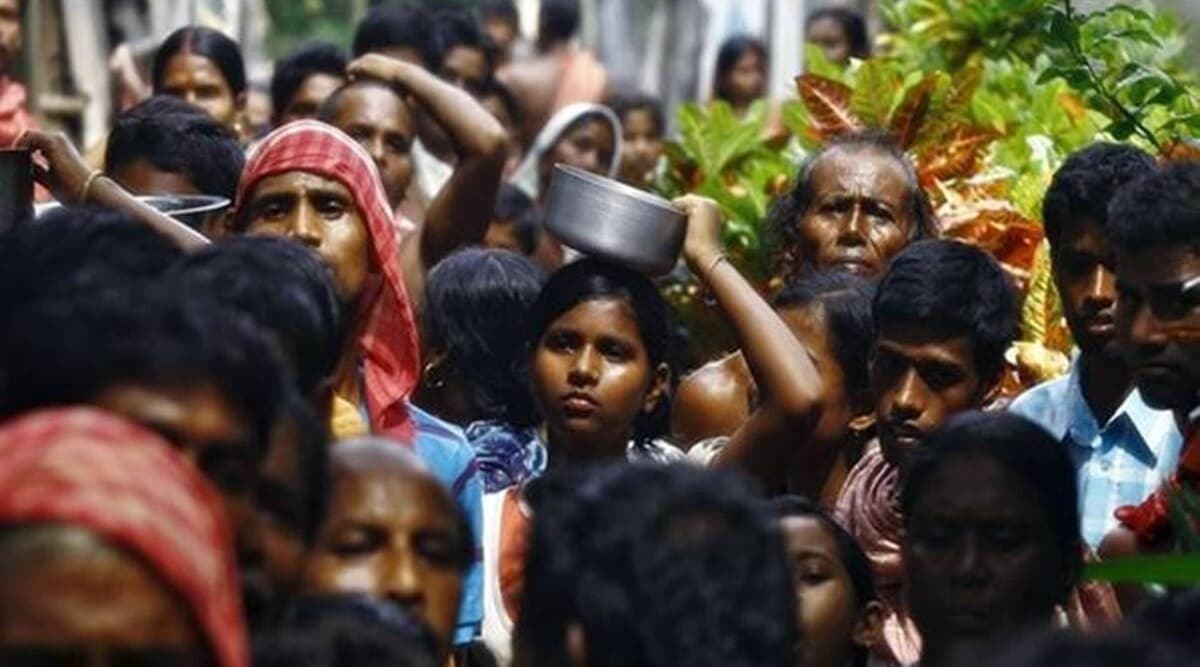 The global population is expected to reach its peak size in the 2080s around 10.4 billion people. Growth rates differ across countries. Today China is the world's populous country (1.426 billion) but its growth has been slowing down. (Photo: File/ Representational)
The global population is expected to reach its peak size in the 2080s around 10.4 billion people. Growth rates differ across countries. Today China is the world's populous country (1.426 billion) but its growth has been slowing down. (Photo: File/ Representational)India is expected to surpass China as the world’s most populous country in 2023, according to a United Nations (UN) report on Monday which said that the world population is forecast to reach eight billion by mid-November 2022.
Presently 1.417 billion, India’s population is expected to rise to 1.429 billion to surpass China, according to UN’s World Population Prospects 2022 released on World Population Day (July 11). In India, a soft launch of the edition was held at the International Institute for Population Sciences in Mumbai.
John Wilmoth, director of the population division in the UN in the department of economic and social affairs, said that the world’s population is still growing but the pace is slowing down. “We expect to reach 8 billion later this year, 9 billion around 2037 and 10 billion around 2058. The global population is expected to reach its peak size in the 2080s around 10.4 billion people. Growth rates differ across countries. Today China is the world’s populous country (1.426 billion) but its growth has been slowing down. Sometime in 2023, we expect India to surpass China as the world’s most populous nation,” he said.
When contacted, Dr K S James, director, International Institute for Population Sciences, told The Indian Express that the concern really was not the rise in population. “The concern is not the increase but the quality of the population in terms of better education, skill levels and such,” he said.
Subscriber Only Stories
According to the report, the population above 65 is growing faster than that below the age. “From 1950-2050, we expect the population above 65 to grow from 5 to 16 per cent of the total. By 2100 it is projected that the global population above the age of 65 will be considerably larger than the population below the age of 15,” Wilmoth said.
Wilmoth, in his address that was aired via social media, said that countries with aging populations should take steps to adapt public programmes to take care of the growing number of older persons. “Today two-thirds of the global population lives in a country or territory where the lifetime fertility is below 2.1 births per woman- roughly the level required for zero growth over the long term. Some of these countries have experienced long periods of very low fertility below 1.5 births per woman. As a result the population of 61 countries or areas are projected to decrease by 1 per cent or more between 2022 and 2050,” Wilmoth said.
Population change in high-income countries is being increasingly driven by international migration. Over the next few decades, migration will be the sole driver of population growth for this group of countries. For low-income and low-middle-income countries, population increase is driven by the excess of births over deaths. Whether they are experiencing net inflows or outflows of migrants, all countries should take steps to ensure that such movements are safe, orderly and regular, according to Wilmoth.
The Covid-19 pandemic has had significant demographic consequences affecting all components of population change, including mortality, fertility and migration. Global life expectancy fell 1.8 years between 2019 and 2021 due to excess mortality associated with the pandemic. The impact of the pandemic on fertility is less clear cut. For some countries, there is evidence of pandemic related fluctuations in births while, elsewhere, it appears that the pandemic did not noticeably affect the trend in births, he said.
India’s fertility rate is expected to dip from 2.01 presently to 1.78 in 2050 and 1.69 in 2100, compared to the global average of 2.3 at present. The findings reveal that positive number of births in India among women aged 15 to 19 might fall from the current 988,000 to 282,000 by 2050, and then to 132,000 by 2100.
Commenting on the report, gender and climate action activist Debanjana Choudhuri said: “What is next? The most important outcome of knowing these estimates is, how will governments step up in their investment on sexual and reproductive access and take proactive steps to address climate change and look out for the vulnerable and marginalised sections of the society. Women and girls have long borne the burden of contraception and family planning and are the worst sufferers of impacts of climate change. There needs to be holistic discussions and improved investment and programmes around comprehensive sexuality education, preventing child marriages, and others. Women and girls should be empowered to be decisionmakers and have bodily autonomy to decide when and if, to have children.”
- The Indian Express website has been rated GREEN for its credibility and trustworthiness by Newsguard, a global service that rates news sources for their journalistic standards.

